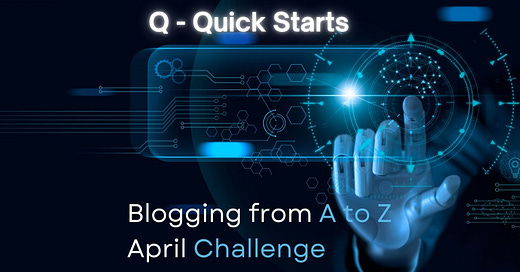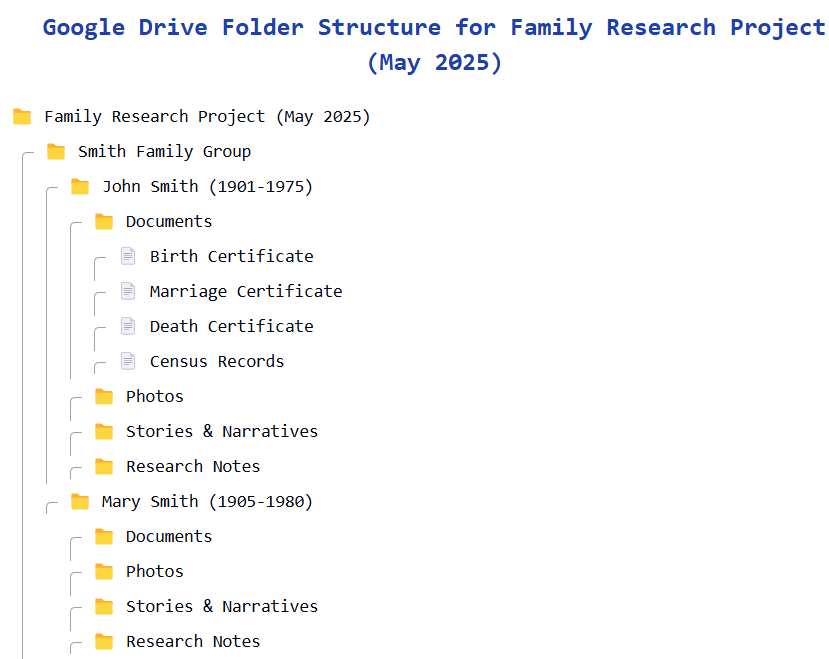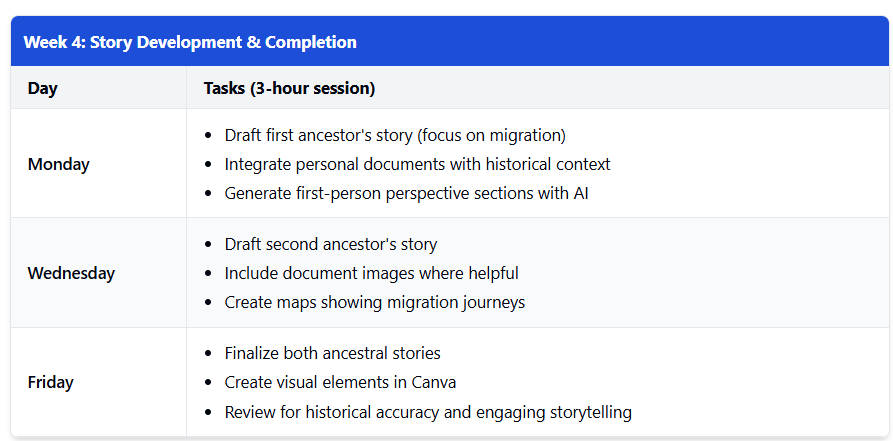I remember feeling overwhelmed when I was just starting on my genealogy journey. There were so many choices to make and decisions to make about where to start and how to document everything—it seemed like I was adrift in a small boat on a vast ocean. I did not know how to steer the boat in the right direction!
That was many decades ago, and now, after years of practice in researching, collating, recording, and writing about the lives of my ancestors, I have confidence in the process of preserving my family history. But, I wish I had my AI assistants beside me way back then; I could have saved so much time!.
AI-Powered Methods for Beginning Genealogists
Beginning a genealogy journey can feel overwhelming. Family trees stretch in countless directions, record types multiply, and research methodologies seem endless. Many newcomers find themselves stuck in analysis paralysis or scattered in their approach. Artificial intelligence now offers powerful shortcuts that can help beginners achieve meaningful results quickly while building sustainable research skills. By following a structured AI workflow, newcomers can leapfrog common beginner challenges and experience the thrill of discovery sooner.
The AI Advantage for Beginners
Before diving into specific workflows, it's worth understanding why AI presents such an advantage for genealogy newcomers:
Information Filtering: AI can quickly sort through vast amounts of genealogical information to identify what's most relevant
Knowledge Acceleration: AI provides historical context and research guidance that typically takes years to develop
Structure Building: AI suggests organized approaches that help beginners avoid scattered research habits
Confidence Boosting: Early wins enabled by AI motivate continued learning and deeper research
Skill Development: Working alongside AI teaches research principles through practical application
Stage One: Choosing an AI tool
There are many types of AI tools available and it can get overwhelming when faced with a plethora of choices. I suggest you begin with ChatGPT and spend some time navigating the platform, customising with instructions, and prompting with simple questions. I have a Six-Step AI Workflow for you below.
My preferred AI squad of LLMs include ChatGPT, Claude, and Perplexity.
My preferred AI squad of Hybrid tools include: Canva and Descript.
My preferred AI squad of Specialist tools include: NotebookLM and NoteGPT.
Let's explore a Six-Step AI workflow that beginners can use to jump-start your family history journey.
Stage Two: Six-Step AI Workflow for Beginning Genealogists
1. Planning Your Research Focus
Effective genealogy requires a clear focus. AI excels at helping beginners define manageable starting points:
How AI Helps:
Suggests well-defined research questions based on what you already know
Identifies the most promising family lines to research first
Recommends a research scope appropriate for your available time and resources
Helps prioritize which ancestral questions to tackle in what order
Action Step: Begin a conversation with an AI assistant by sharing what you know about your family and asking for help defining 2-3 specific research goals to start with.
Sample Prompt: Complete a simple test prompt: "Hello, I'm researching my Australian ancestry. What features do you offer that might help with genealogical research?"
2. Crafting Effective Prompts
The quality of AI assistance depends heavily on how you formulate your questions. Beginners often don't know what to ask or how to ask it.
How AI Helps:
Responds to simple queries with structured information that models good research questions
Suggests follow-up questions you hadn't considered
Teaches terminology and concepts through contextual explanations
Adapts to your knowledge level as you learn
Action Step: Start with simple questions like "What records should I look for to find my great-grandparents' marriage date if they married around 1920 in [location]?" As you learn, your prompts will naturally become more sophisticated.
3. Uploading Existing Materials
Most beginners have some family information—perhaps old documents, photos, or family stories—but don't know how to build from these starting points.
How AI Helps:
Analyzes uploaded documents to extract names, dates, relationships, and locations
Identifies potentially valuable information in family papers you might have overlooked
Suggests connections between separate documents
Recommends next research steps based on uploaded materials
Action Step: Digitize and upload key family documents (certificates, letters, photos with inscriptions) to AI tools that can analyze their content. Ask the AI to extract all potentially useful genealogical information.
Sample Prompt: Start with these basic questions:
"What records exist for gold rush miners in Victoria?"
"How do I find convict ancestors who arrived in Australia?"
"What happened during the Federation of Australia?"
4. Engaging in Iterative Conversations
Genealogical research is rarely linear. Beginners often struggle with knowing what to do when they hit roadblocks or make discoveries.
How AI Helps:
Suggests alternative approaches when initial research paths don't yield results
Helps interpret confusing records or conflicting information
Provides historical context that explains gaps or anomalies in records
Recommends next steps based on what you've found so far
Action Step: Maintain ongoing research conversations with AI, sharing discoveries and challenges as you go. Instead of starting new conversations each time, continue existing threads so the AI maintains context about your research journey.
Sample Prompts: Substitute words in [square brackets] with your preferences.
Research information about life in [Wodonga, Victoria], in the [1890s]
Please provide information about the [Wodonga Historical Society] and the [Wodonga Family History Society]. How can they help me with my research?
What information should I have about my ancestors before asking for assistance at the [Wodonga FHS]?
5. Downloading and Organizing Responses
Beginners often struggle with information management, creating scattered research that becomes difficult to navigate later.
How AI Helps:
Suggests structured research summaries that organize what you've learned
Creates formatted source citations you can save for future reference
Produces suggested layouts for research logs documenting your process
Develops research plans for future sessions
Action Step: Regularly download AI conversations and generated materials. Create a simple folder structure on your computer, organized by family line and research question, to store these resources.
Sample AI Folder Structure:
6. Implementing the Knowledge in Your Workflow
The ultimate goal is not just collecting information but integrating what you've learned into an effective research practice.
How AI Helps:
Suggests specific databases or archives to search based on your research questions
Provides templates for tracking and analyzing your findings
Recommends how to organize your growing family's information
Offers learning resources tailored to your specific research needs
Action Step: Use AI-generated guidance to create a regular research routine. Block time on your calendar for focused research sessions using the approaches you've developed, together with AI assistance.
Sample Prompt:
Create a Research Plan for the next [month]! I have [3 hours available on Mondays, Wednesdays, and Fridays]. I am focussed on [English and Welsh] ancestors during the [20th century], their migration patterns, using mostly census data and certificates of birth, baptism, marriage, citizenship, and death. At the end of the [month], I aim to complete [one or two migration stories] on people in my family tree.
Response: Claude provided a clear research plan adhering to all the parameters of my prompt.
Note: I then asked Claude to “create an artefact for the Research Plan and display as a table”.
Best Practices for AI-Assisted Beginners
As you implement this workflow, keep these principles in mind:
1. Verify AI-Suggested Information
Always treat AI-generated information as leads to verify, not as facts. Use AI to point you toward primary sources where you can confirm details yourself.
2. Learn as You Go
Pay attention to the research methods the AI suggests. The goal isn't just to collect ancestors but to develop research skills that will serve you long-term.
3. Balance Breadth and Depth
AI can help you quickly sketch a broad family outline, but don't be afraid to dive deep on specific ancestors that interest you. Both approaches have value.
4. Document Your Process
Save both the questions you ask and the AI's responses. This documentation will become increasingly valuable as your research advances.
5. Connect with Human Experts
AI is a powerful starting tool, but also seek out genealogy societies, online forums, and family history centers where human experts can provide guidance.
Summary: From Quick Start to Sustainable Research
Artificial intelligence offers beginning genealogists an unprecedented opportunity to bypass the steep learning curve that has traditionally characterized family history research. By following the six-step workflow outlined above—planning, prompting, uploading, iterative conversation, downloading responses, and implementing knowledge—newcomers can experience early success while building the skills needed for longer-term research.
Remember that AI works best as a research assistant and learning accelerator, not a replacement for your critical thinking. As you gain experience, you'll develop a collaborative relationship with AI tools, using them to overcome obstacles and expand possibilities while bringing your growing expertise to the research process.
The journey of discovering your family history remains profoundly human, but with AI assistance, the path to meaningful discoveries just got considerably shorter.
Ready to elevate your genealogy research with AI? Come and learn how to become an AI-skilled ancestral storyteller in the course, "Beyond the Pen: Using AI to Transform Ancestral Storytelling." Discover practical techniques and ethical approaches to incorporating AI into your family history work. Join us at Beyond the Pen and transform how you preserve your family's legacy!
Are you a beginning genealogist who has used AI to help start your family history journey? What discoveries has it helped you make? Share your experiences in the comments below!














I love this Carole. It's so simple to follow yet I can see how it would enrich my research. I must admit that I haven't thought to ask AI for a research plan, but will definitely be doing so. I'll be popping this info as a cheat sheet at the front of my digital research folder.
Carole, This is great information. In fact, I'm going to print this out so I'll have it at my desk to refer to. Love how you explained what AI can do and then sample prompts. Awesome!! Thanks so much!!